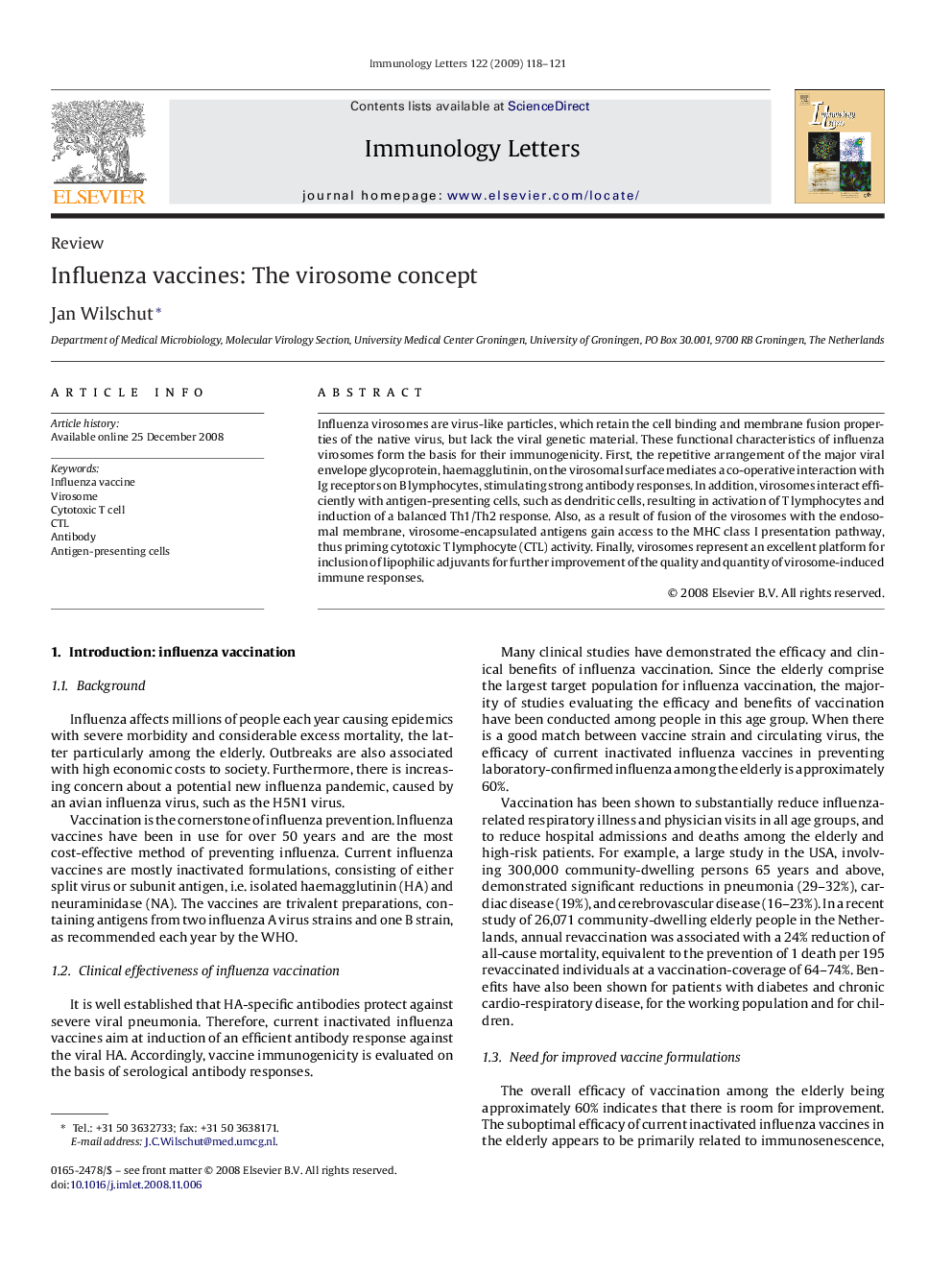| Article ID | Journal | Published Year | Pages | File Type |
|---|---|---|---|---|
| 3356079 | Immunology Letters | 2009 | 4 Pages |
Influenza virosomes are virus-like particles, which retain the cell binding and membrane fusion properties of the native virus, but lack the viral genetic material. These functional characteristics of influenza virosomes form the basis for their immunogenicity. First, the repetitive arrangement of the major viral envelope glycoprotein, haemagglutinin, on the virosomal surface mediates a co-operative interaction with Ig receptors on B lymphocytes, stimulating strong antibody responses. In addition, virosomes interact efficiently with antigen-presenting cells, such as dendritic cells, resulting in activation of T lymphocytes and induction of a balanced Th1/Th2 response. Also, as a result of fusion of the virosomes with the endosomal membrane, virosome-encapsulated antigens gain access to the MHC class I presentation pathway, thus priming cytotoxic T lymphocyte (CTL) activity. Finally, virosomes represent an excellent platform for inclusion of lipophilic adjuvants for further improvement of the quality and quantity of virosome-induced immune responses.
